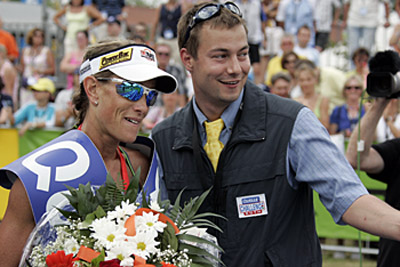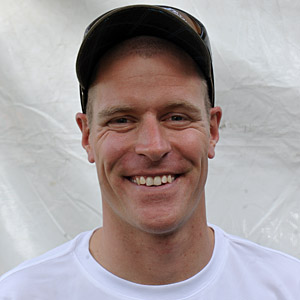Challenge Copenhagen promises a Danish treat
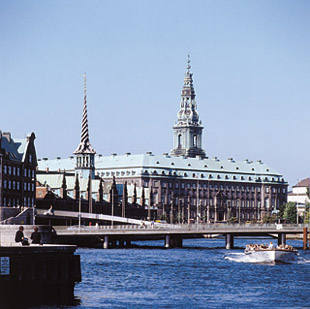
Copenhagen began as a humble Viking fishing village, and rose to a proud capital of the Danish empire that fought off invasions by the Hanseatic League in the 13th century, by Swedes in the 17th century and offered Britain’s Lord Nelson the toughest sea battle in his career in 1801. The history of its royalty and its castle in Elsinore sparked the imagination of William Shakespeare and his great drama Hamlet. It is the home of the renowned fabulist Hans Christian Andersen. And today, Denmark and its elegant capital Copenhagen is one of the world’s modern design capitals and renowned as one of the world leaders in environmentally friendly and ecologically conscious living. Its inner harbor is so clean people swim in it daily, and 36 percent of its citizens bicycle to work daily. Even today its history can be clearly seen in its grand palaces, copper-roof townhouses, cobblestone streets and bustling renovated waterfront that mix happily with some of the most innovative, imaginative and modern steel and glass buildings in the world.
And still, in league with its modernity, Denmark retains one of the most elegant monarchies in the world, which has received latter day renown as the inspiration for the popular movie franchise, The Princess Bride.
The 1.1 million inhabitants of the immediate urban area include some of the world’s greatest architects, chef’s businessmen and literary lions. And her world famous sportsmen include the great sailor Paul Elvstrom, Tour de France winner cyclist Bjarne Riis, golfer Thomas Bjorn, NFL player Morton Andersen. But coming on fast in national recognition and international fame are Denmark’s Peter Sandvang, Susanne Nielsen, Rasmus Henning and Torbjorn Sindballe in the relatively modern sport of triathlon.
Which brings us to August 15 and the full Ironman distance Challenge Copenhagen event. Run under the carefully expanding Team Challenge banner whose centerpiece is the historic Challenge Roth event in Germany, Copenhagen will offer triathletes a race in the heart of one of the world’s greatest urban jewels.
“What makes Challenge Copenhagen unique is surely the location,” said race director Thomas Veje Olsen. “We have managed to build a race course that takes athletes pass some of the most scenic and famous attractions of the city and still lives up to high sporting standards. The athletes will pass New Harbor, Amalienborg Castle and the Opera before they reach the finish line in front of the Danish Parliament.”
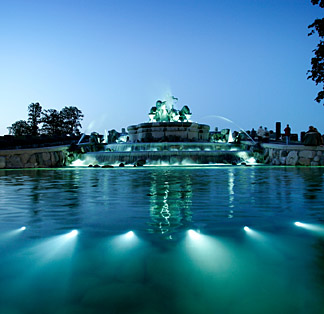
Danish triathlon superstar Rasmus Henning, who won’t be competing this year on his home track, is equally enthusiastic about the course. “It’s going to offer surroundings you aren’t going to get in any other Ironman distance event, I think,” said Olympian, two-time Hy-Vee champion and Ironman China winner. “The bike to run transition will be in the square in front of the National Parliament. The run will be on the waterfront right in front of the Queen’s Castle. They will ride past the famous Little Mermaid statue, past churches, bridges, cafes. The bike will ride up the coast road where you can look across the straits to Sweden and will get a whole lot of sailboats. So it’s going to be neat.”
There have been many triathlons conducted in spectacular urban locales, especially Olympic distance events in Sydney, London, Hamburg, Chicago, San Francisco, Miami and Washington DC which were laid out in the iconic city centers. Half Ironman races in Monaco, Singapore, New Orleans, and San Juan also fill that bill as do Ironman-distance events in Zurich, Frankfurt and Nice. But not all of these will offer traffic-free zones in the shadow of royal palaces and passing in front of ornate buildings drenched in nearly a millennium of history and beauty.
Henning says the course will be surprisingly challenging, not just be a table-top flat speedway. “It will be surprisingly challenging,” said Henning. “The course is relatively flat but it will be still quite hard because there are many corners. And there are a lot of rolling hills and there is actually one hill (72 meters high) that they have to go across twice that is also part of the world cycling champs. That is quite a significant hill. It is not that long but it is pretty hard.”
The race also promises to tap a large potential hunger for the sport among the Danes who will be attracted to a world class event at home. “It gives a lot of attention in Danish media and it attracts a lot of new athletes to the sport,” said Henning. “A lot of Danes have been hibernating triathletes for many years. A lot of them haven’t done a triathlon, but they have had the idea of doing an Ironman sometime in the future. When this came, a lot of them just came out and they bought their way in.”
Challenge Copenhagen comes in the third year of the Team Challenge global expansion, following the rural wonders of the full Ironman distance Challenge Wanaka in New Zealand, the lure of the sunny Mediterranean resort of Challenge Barcelona-Maresme, and half Ironman distance events in Germany’s hilly Kraichgau, France’s Niederbronn-Les-Bains, and the Austria’s Walchsee-Kaiserwinkl in the Tyrol.
Professional prize money at Challenge Copenhagen will be 50,000 Euros ($67,000) with 8,000 Euros ($10,800) to the winners in a field which pro women stars Belinda Granger, Lisbeth Kristensen, Hillary Biscay, Anne Fallows and a men’s field which includes Chris McDonald, Olaf Sabatschus, Ain Alar Juhanson, Petr Vabrousek, Clas Bjorling and Luke Dragstra.
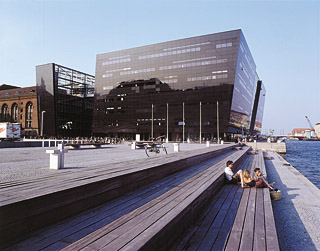
Joining the Challenge Copenhagen crew to promote this inaugural long course triathlon which may prove to be one of his country’s significant sporting events is Ironman star Torbjorn Sindballe, who was forced to retire recently due to a dangerous heart condition but who has thrown himself into new ventures connected with the sport including a biography, coaching and sports promotion. In an extensive telephone and internet interview, Sindballe says he regrets he is not able to race on his home ground, but had a lot to say about what triathletes will enjoy about this unique venue.
Slowtwitch: Ironman Switzerland and Ironman Germany in Frankfurt also fill the bill of an Ironman run in the heart of internationally renowned urban settings. But of all the others, even if headquartered in cities, take place largely in suburban or rural venues. As an experienced international Ironman competitor, can you tell me which races of this category take place in a roughly similar urban environment?
Torbjorn Sindballe: The two you mentioned plus Wisconsin and Nice could also fit the bill of a course with a somewhat similar urban layout, but they have other points to them as well.
ST: So what makes Copenhagen unique?
Torbjorn: I believe that the Copenhagen course is absolutely unique as it is truly in the heart of one of the greatest cities in world. The atmosphere, the history, architecture and not to forget clean waters in the harbor and bike friendliness with bike paths throughout the city sets it apart. Besides winning Kona, this is the one race I am truly sad that I do not get to do. To lead and win the race on my training grounds next to friends and family in my home town would have been nothing less than outstanding.
ST: While some purists may complain about any Ironman set in flat terrain, what will be the key physical challenges of this bike course? Will it be the sharp corners in the city which will demand acceleration and bike handling? Will it be trade winds of mid August?
Torbjorn: Multiple challenges can arise. While there are no big climbs in Denmark, the course will be both technical and feature many smaller hills that will gradually zap the legs. So explosive power as well as handling skills are required. The wind and climate might become a big challenge, but usually the climate in August is mild and perfect for racing.
ST: Can you expound on the joys of racing through a jewel-like international capital with ancient and modern buildings, a scenic harbor, and cheerful cheering fans?
Torbjorn: I think there is just something very monumental about powering a bike or running on streets that are normally packed with cars. While smaller rural roads have their charm and beauty there is definitely an attraction to having a big road to yourself, feeling the adrenaline rush of the spectators echoing between the buildings. If you are not racing for a time I believe there are great scenic points and experiences along the course to enjoy and help you keep momentum together with the spectators.
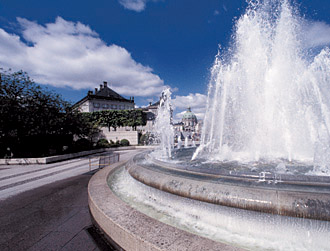
ST: What will make Challenge Copenhagen unique for spectators?
Torbjorn Maybe the race organizers should do a little card with the sights along the way for tourist oriented participants. Before and after races there are also great places to see and go, so it is the perfect place for a race getaway or family trip.
ST: Tell us about the love the Danes have for endurance sports of all stripes – and triathlon in particular?
Torbjorn: We were born cycling and have great accomplishments in swimming, rowing, kayaking, orienteering and triathlon as well, so it is part of our national sports heritage along with soccer and handball. I think the very focused work mindset and the overall life balance perspective of Danes fits well with endurance sports. I think we also demand high standards of ourselves before we get involved in anything, but from the buzz around Challenge Copenhagen it seems the race has the class to become a very cherished event among the people in Copenhagen.
ST: How much of a presence will the Danish Royal Family have at this summer event?
Torbjorn: The race organization is working on it. His royal highness Crown Prince Frederik is a true fan of endurance sports having done several marathons himself, so hopefully he can find the time in his busy schedule to honor the race with a visit. In fact he has two residencies on the course so the trip is not that far.
ST: Denmark has a strong tradition of world class triathletes such as Peter Sandvang, Susanne Nielsen, yourself and Rasmus Henning. Which of them are renowned in your country? And how many will take part in the festivities of this race?
Torbjorn: In the general public we get attention when we do well in the European, World or Olympic championships — or in Kona. So all of the mentioned athletes have had their time in the sportlight during their career. However we have lacked a big event in Copenhagen for years and now that it is coming I believe our best triathletes will benefit from that and we will see a boom in triathlon as a sport as well. I am officially involved with the race organization and will do commentary and VIP hosting on race day and events in the days before. I know Rasmus is coaching two former sports legends, Rolf Sorensen the cyclist and Steen Tinning the golfer, to their first attempt at the distance so he will be present as well with the media. I hope to see Susanne Nielsen, Peter Sandvang and everyone else that is part of the Danish triathlon history books as well. It will be a great party for sure.
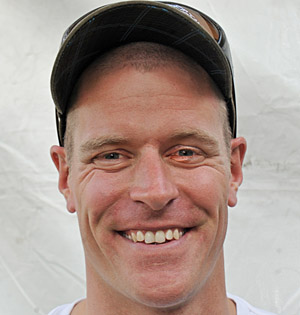
ST: Please share with our readers places they should see and enjoy when visiting Copenhagen and the surrounding countryside.
Torbjorn: They should definitely take a swim in one of the open water pools in the harbor while hanging out and try the canal boats where they can enjoy the city waterside. The famous historic entertainment park, Tivoli Gardens, is also worth a visit whether you are young or grown up the Nyhavn (New Harbor) on the run course would be awesome to catch a beer an ice cream treat on a hot afternoon. Scattered out over the city are many other historic buildings, wonderful parks, top quality restaurants, museums, a zoo, theaters and cafes to enjoy. Out of town to the north there are many small lakes and forests that can be perfect for a picnic or a fun relaxing canoeing trip, a swim or a run on the many wonderful trails. The forests around Copenhagen have some of the best trails in the world. There are beaches scattered all along the coast and also the famous Kronborg castle in Elsinore is about an hour north of the city just of the northern part of the bike course.
ST: To what degree will the streets be closed for the competitors?
Torbjorn: The streets will be closed to traffic throughout the race, so there should be plenty of road to ride.
ST: Tell us something about the experience and talent of the race organizers headed by Thomas Veje Olsen.
Torbjorn: They are a great enthusiastic entrepreneurial crew. The task of putting on an Ironman in a major European capital city is probably bigger than anywhere else and these guys just have the vision and dream to do it. They do not have any experience themselves but they draw upon others especially Felix Walschöfer from the Challenge Roth family and capacities with those in the city who have put on other events many times. So far they have done everything right and I am sure they can provide a fantastic and safe race in that special atmosphere unique to the city and the challenge series.
ST: How proud will you be to share your city and country with the triathlon world with this event?
Torbjorn: Immensely – I am very proud that we finally have a big event that can show our country to the world and our sport in Denmark delivering the joy, passion and satisfaction of overcoming challenge.
ST: What other big international sporting events have been run in Copenhagen?
Torbjorn: Lots. There is the annual Tour of Denmark cycling, the Road cycling world champs will be held here in 2011, and there are marathons, automobile grands prix, sailing contests, open water swimming contests in the canals around the parliament, the European triathlon short course champs some years ago as well as many other championship events in and just out of Copenhagen. Last year Copenhagen has also hosted the climate summit – COP 15 – and the most recent International Olympic Committee session.
ST: What will be the signature sight along this course that will photograph well and remain in the memory of the fans?
Torbjorn: There are many: the beach park at the swim start, the royal castle, the parliament, the harbor, the opera and the historic buildings in the cit. And all along the beach road on the bike course north of the city there are wonderful views and locations.
ST: So, will all the streets be smooth? Or will there be some Paris-Roubaix-style cobblestones?
Torbjorn: All roads are good quality and smooth like butta, except for a very short section of well-laid cobblestones to break it up just a little.
ST: What advice and race preparation seminars will you personally make available to entrants?
Torbjorn: It is not planned yet, but I will most likely be hosting several key seminars and Q and A’s during race week sharing my stories and race tips. I will be launching my new book (in Danish) at the event so there will be book signings as well. I hope to see everyone there taking part in a great event.


